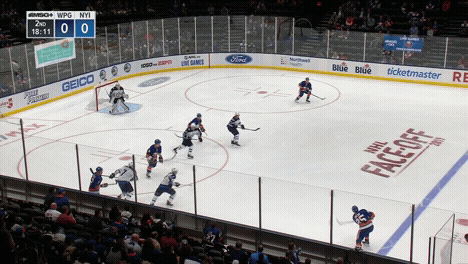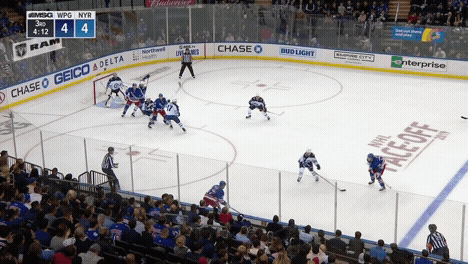When Ken Hitchcock was head coach of the St. Louis Blues he dropped a line in a scrum while coming through Winnipeg that has stuck in my head ever since.
“There’s a price to be paid when you play the Winnipeg Jets,” he said.
It resonated because it rang true. The Jets, for years, had been one of the league’s biggest teams and they played like it. They took every inch of ice by force and inflicted abuse on any opponent who tried to take it from them.
It may be early in this 2019-20 season, but those days are clearly over.
The Winnipeg Jets defence, as it’s currently constructed, is a bet that aggression will be further phased out of the NHL.
It’s an interesting wager considering the Jets’ success on offence relies on big men (Blake Wheeler, Mark Scheifele, Adam Lowry) bottling teams in their defensive end with their combination of size, speed and board work that wears defenders down. Few teams have done it better over the past two years. And if an opponent was able to escape that gauntlet their reward was to skate into one of the most imposing back ends in the National Hockey League.
Through three games we can see Winnipeg’s smothering offensive game plan remains the same — and that’s not surprising given the returning personnel. However, the defence no longer greets opponents with hulking blueliners, but rather smaller, slicker skaters who will have to defend with good sticks and an ability to plug lanes.
Josh Morrissey is the perfect example — and he’s highly effective at this. He’s been the Jets’ top shutdown defender for some time now. The organization feels newcomer Neal Pionk is a player in the same vein. The same goes for 18-year-old Ville Heinola, who thrived against the likes of 6-foot-5, 225-pound Wheeler in training camp and hasn’t looked out of place at the NHL level.
Senior Writer Ryan Dixon and NHL Editor Rory Boylen always give it 110%, but never rely on clichés when it comes to podcasting. Instead, they use a mix of facts, fun and a varied group of hockey voices to cover Canada’s most beloved game.
Outside of rookie Tucker Poolman, though — and maybe waiver claim Carl Dahlstrom — there’s no one in this defence group capable of meting out the same kind of punishment Winnipeg has been known for.
And this is causing problems on the scoresheet. The Jets have allowed 14 goals in just three games so far this season and 10 have come from the ‘high danger’ area in front of the net, per Natural Stat Trick. That number would look a lot worse if not for a few brilliant outings by Laurent Brossoit. No team has allowed more high danger chances early on than Winnipeg’s 49 across all situations.
Simply put, opponents aren’t forced to earn their goals through brilliant passing or highly cerebral plays. They simply get to the net for high risk opportunities over and over.
Here’s one example on Josh Bailey’s goal from Sunday:

And another from their opener against the Rangers on Brett Howden‘s game winner:

It just appears to easy to get into the prime area in front of the net against this defence, and it may very well get worse. One has to wonder where the response will come from when the likes of Tom Wilson or Ryan Reaves bully their way to the Jets’ net front.
Before the game last November in which Patrik Laine scored five goals, newly hired St. Louis Blues head coach Craig Berube told the Hockey Night in Canada broadcast crew his team was going to play an old school style of hockey against the Jets. It seemed an antiquated strategy at the time. It also backfired spectacularly that night as the Jets ran away with an 8-5 victory. But it didn’t look ridiculous come April when the Blues ground the Jets down and out of the playoffs, serving notice that grit remains a difference-making factor.
Is this Jets defence corps any better suited to absorb that kind of abuse?
Yes, the league is changing and you can’t dish out punishment the way you used to in front of the net, but if you’ve watched this team over the past few years you’ve noticed the Jets pushed those boundaries further than most. Their net front remained a war zone where Dustin Byfuglien, Tyler Myers, Jacob Trouba and Ben Chiarot all subscribed to the “no man left standing“ mentality that usually left opponents on the ice rather than pouncing on loose pucks in the crease.
Again, there was a price to be paid. The question this year is much different than years past: is there anyone left to collect?
from Sports - Latest - Google News https://ift.tt/2Iz9j7o
via IFTTT
October 08, 2019 at 10:12PM

Tidak ada komentar:
Posting Komentar